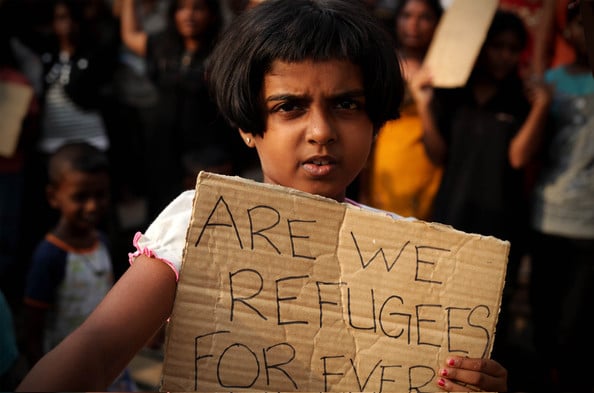
Long a controversial issue, Australia’s treatment of asylum seekers is getting renewed attention after two boats sank in the Indian Ocean last week. Although the government had been tracking both boats for days, no attempts were made to lend assistance until after they disappeared from radar. Furthermore, the government opted not to recover the bodies discovered in the subsequent rescue operation, instead leaving the bodies to nature in the water. These incidents have renewed the debate over how the country treats asylum seekers trying to reach Australia through irregular maritime arrivals. And while such renewed attention is needed, recent events suggest that Australia is continuing to head in the wrong direction on refugee rights.
Despite the inherent dangers of the journey, Australia is a popular destination for asylum seekers from Central and Southeast Asia. For those who travel illegally by boat, a policy of mandatory detention awaits for them upon arrival. The official government policy since 1992, mandatory detention was adopted to weed out possible security threats and maintain authority over the country’s borders. These goals are understandable and even necessary to an extent, but the real impact of the policy is that most asylum seekers spend years being detained while their asylum claims are trapped in a massive bureaucratic system. In this regard, as recent government commercials aired in Afghanistan demonstrate, detention is just as much about presenting a deterrent to would-be asylum seekers as it is about security.
Unfortunately, the deterrent doesn’t appear to be working as asylum seeker numbers continue to grow. As more people try to reach Australia, mainly relying on the rickety boats provided by less than reliable people smugglers, so do the chances that people will perish in the effort. For those lucky enough to survive, various detention facilities await them depending on the level of “threat” the Australian government believes they pose. The unluckiest among them will find themselves in offshore detention centers like the one on Manus Island in Papua New Guinea where harsh conditions and little legal attention has led to suicide attempts among inmates who can expect to be there for up to five years while their asylum claims are processed.
This is where the policy starts to run into trouble. As a signatory to the 1951 Convention Relating to the Status of Refugees, Australia has obligations under international law to treat and process refugees and asylum seekers in a humane and equitable fashion. While a receiving state can undertake provisional measures in support of national security, such measures are intended to be narrowly focused on the possible threat a specific individual may represent in exceptional circumstances and not applied en masse to all those applying for refugee status. There are also obligations for housing, public relief, access to the courts and administrative assistance equitable to that of a country’s nationals. Most importantly in the case of Australia, a receiving state cannot impose penalties on refugees who enter the country illegally as long as they are promptly identified and show good cause for why they should be considered refugees. Australia’s current policies on asylum seekers and mandatory detention violate all of these obligations.
This is also where the debate within Australia often gets stuck. A recent editorial in The Australian illustrates one aspect of this debate, where the question over Australia’s policies is not whether they are just, but rather whether those who risk their lives to seek refuge there are worthy. Despite widespread reporting on the hardships and oppression faced by the primary groups attempting to reach Australia through irregular maritime arrivals – Iranians, Hazaras from Afghanistan and Pakistan, Tamils from Sri Lanka, and stateless peoples (most likely Rohingyas from Myanmar) – a common assertion in the public discussion on asylum policies is that these are economic migrants rather than genuine refugees. If true, then Australia would not have any obligations towards them under the Refugee Convention. However in September of last year, the regional representative of UNHCR criticized the domestic political debate as misleading, pointing out that 90% of those seeking asylum in Australia were truly refugees that fell under the 1951 Refugee Convention and not economic migrants. As such, whether Australians want them to come or not, they still have international obligations for those who arrive and the policies in place violate those obligations at the most basic level.
Yet rather than amend current policies to meet those international obligations, Australia took a different route. A law passed last month by parliament excises the Australian mainland from the migration zone; in other words, for the purposes of immigration, Australia removed itself from its own borders. This means that all asylum seeker new arrivals, whether they arrive on offshore Australian territories like Christmas Island or the mainland, can be processed in offshore detention centers where access to the courts and administrative proceedings is extremely limited. It also essentially removes Australia from the Refugee Convention without going through the formal (and very public) process of doing so.
As the international community marks World Refugee Day today, it is disheartening to see the trajectory taken on refugee rights by one of the founding members of the 1951 Refugee Convention. But with renewed attention on these issues and their impact, there is the hope that positive change can come to Australia that will balance the sovereignty and right of the country to control its own borders with the human rights of those forced by violence and oppression from their own homes.